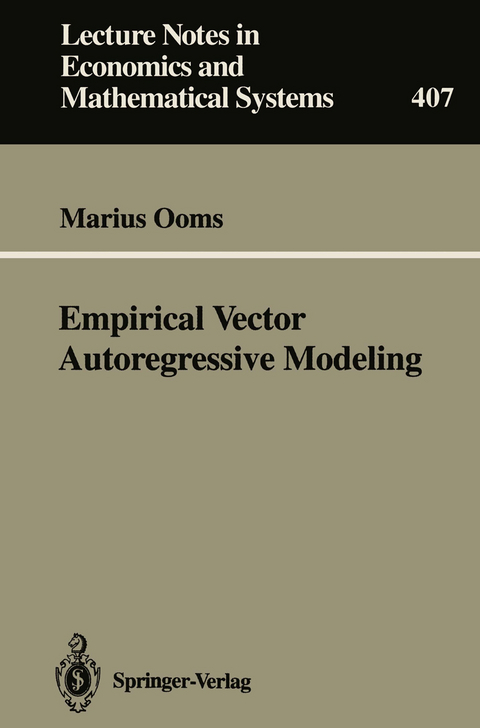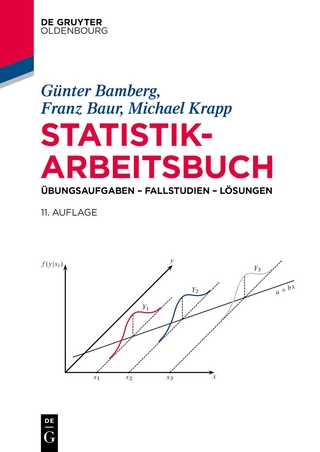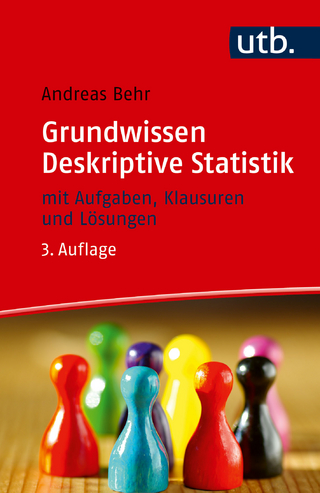
Empirical Vector Autoregressive Modeling
Springer Berlin (Verlag)
978-3-540-57707-2 (ISBN)
6. 4). The easiest way to get away with possible mistakes is to admit they may be there in the first place, but that time constraints and unfamiliarity with the solution do not allow the researcher to do something about them. This can be a viable argument.
1 Introduction.- 1.1 Integrating results.- 1.2 Goal of the study.- 1.3 Data and measurement model.- 1.4 Baseline model and methodology.- 1.5 Outline of the study.- 1.6 What is new?.- 2 The Unrestricted VAR and its components.- 2.1 Introduction.- 2.2 The model.- 2.3 Univariate processes and unit roots.- 2.4 Integrated processes.- 2.5 Alternative models for nonstationarity, long memory and persistence.- Appendix A2.1 MA representation integrated process.- Appendix A2.2 Univariate testing for unit root nonstationarity.- 3 Data Analysis by Vector Autoregression.- 3.1 Introduction.- 3.2 Data-oriented measures of influence.- 3.3 Diagnostic checking.- Appendix A3.1 Influence measures for the normal linear model.- Appendix A3.2 Influence measures for the multivariate general linear model.- Appendix A3.3 Influence measures in principal component analysis.- 4 Seasonality.- 4.1 Introduction.- 4.2 Application of the idea of unobserved components.- 4.3 Application of linear filters to estimate unobserved components.- 4.4 Data analysis of the seasonal component.- 4.5 Application of the Census X-11 filter in a VAR.- Appendix 4.1 Trigonometric seasonal processes in regression.- Appendix 4.2 Backforecasts and deterministic changes in mean.- 5 Outliers.- 5.1 Introduction.- 5.2 The outlier model.- 5.3 Some effects of outliers on VAR estimates.- 5.4 Derivation of the LM-statistics.- 5.5 An artificial example.- 5.6 Application to macroeconomic series.- 5.7 Two simple ways to study the influence of outliers.- Appendix 5.1 Some proofs concerning outlier test statistics.- Appendix 5.2 Subsample analysis outlier influence.- Appendix 5.3 Robust estimation by extraction of additive outliers.- 6 Restrictions on the VAR.- 6.1 Introduction.- 6.2 Cointegration, the number of unit roots, and common trends.- 6.3 Straightforward transformation formulae.- 6.4 Trend stationary processes and quadratic trends.- 6.5 Estimating pushing trends and pulling equilibria.- 6.6 Multivariate tests for unit roots.- Appendix 6.1 Computation and distribution multivariate unit root test statistics.- 7 Applied VAR Analysis for Aggregate Investment.- 7.1 Introduction.- 7.2 The variable of interest and some of its supposed relationships.- 7.3 Measurement model.- 7.4 Univariate analysis.- 7.5 Multivariate analysis.- Appendix 7.1 Data sources and construction.- Appendix 7.2 Results of final VECM model.- Appendix 7.3 Open economy stochastic dynamic general equilibrium models.- Summary.- References.- Name index.
| Erscheint lt. Verlag | 28.3.1994 |
|---|---|
| Reihe/Serie | Lecture Notes in Economics and Mathematical Systems |
| Zusatzinfo | XIII, 382 p. |
| Verlagsort | Berlin |
| Sprache | englisch |
| Maße | 155 x 235 mm |
| Gewicht | 609 g |
| Themenwelt | Mathematik / Informatik ► Mathematik |
| Wirtschaft ► Allgemeines / Lexika | |
| Wirtschaft ► Volkswirtschaftslehre ► Ökonometrie | |
| Schlagworte | Calculus • Data Analysis • Datenanalyse • Econometrics • Mathematical Statistics • Ökonometrie • statistical method • Statistics • Time Series Analysis • Zeitreihenanalyse |
| ISBN-10 | 3-540-57707-6 / 3540577076 |
| ISBN-13 | 978-3-540-57707-2 / 9783540577072 |
| Zustand | Neuware |
| Haben Sie eine Frage zum Produkt? |
aus dem Bereich


